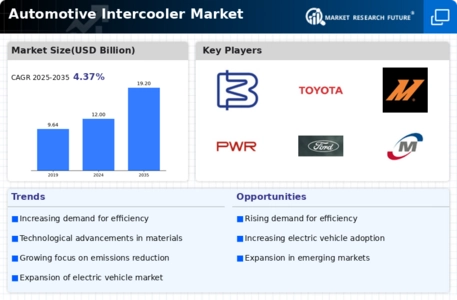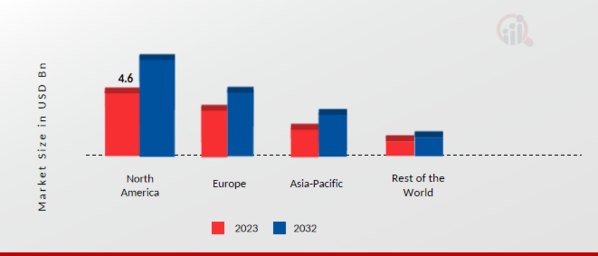Leading market players are investing heavily in research and development to expand their product lines, which will help the automotive intercooler market, grow even more. Market participants are also undertaking various strategic activities to expand their global footprint, with important market developments including new product launches, contractual agreements, mergers and acquisitions, higher investments, and collaboration with other organizations. The automotive intercooler industry must offer cost-effective items to expand and survive in a more competitive and rising market climate.
Manufacturing locally to minimize operational costs is one of the key business tactics manufacturers use in the global automotive intercooler industry to benefit clients and increase the market sector. In recent years, the automotive intercooler industry has offered some of the most significant medical advantages. Major players in the automotive intercooler market, including bell intercoolers, forge motorsport Inc, Kale Oto Radyator, Toyota, Mishimoto, PWR, Ford, Modine Manufacturing, JC Performance Parts, KVR International, PT Toyota-Astra Motor (TAM), and others, are attempting to increase market demand by investing in research and development operations.
Toyota Motor Corporation, Japan's leading automotive manufacturer, and Astra International, an Indonesian diversified conglomerate interested in various industries, including automotive, financial services, and heavy equipment. The company was established in 1971 and is headquartered in Jakarta, Indonesia. TAM serves as the authorized distributor and manufacturer of Toyota vehicles in Indonesia. For instance, in October 2022, In addition to launching the all-new Land Cruiser SUV, PT Toyota-Astra Motor (TAM) also introduced the updated Fortuner, now offered with the option of a brand-new diesel engine with the designation 1GD-FTV.
This 2,755-cc 1GD FTV, in-line, four-cylinder, DOHC, VNT intercooler engine has a maximum power output of 203.9 PS at 3,000–4,000 rpm and 50.9 kgm at 1,600–2,800 rpm.
Mishimoto is an automotive aftermarket company based in the United States. It was founded in 2003 and is headquartered in New Castle, Delaware. The company primarily designs, develops, and manufactures high-quality performance parts and accessories for various vehicles, including cars, trucks, and motorcycles. Mishimoto's product lineup includes various cooling solutions, such as radiators, oil coolers, intercoolers, and silicone hoses. For instance, in 2021, Mishimoto, who already has a catch, launched their intercooler pipe improvement and can go for the 2.3t in the Ranger.
According to claims made by the intercooler, their configuration on the standard tune produced +11 whp and +22 wtq. According to some reports, the stock tune is pulling time to compensate for the increased air volume.











Leave a Comment